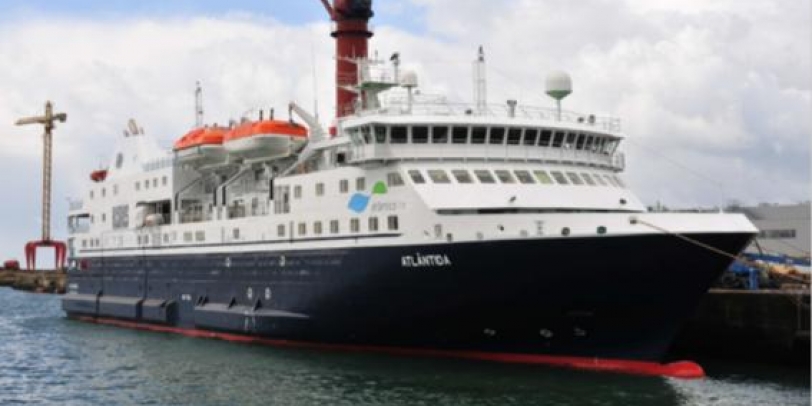The M/V “Atlantida”
Another extraordinary project, of TecnoVeritas.
The state-owned company Atlanticoline of Azores has ordered in 2007, the ROPAX vessel “Atlantida” that can be categorised as a luxurious vessel. The vessel was subsequently rejected in 2009 by ATLANTICOLINE (due to difficulties into achieving the contract speed of 17 knots @ 85% MCR) (maximum speed reached speed during sea trials was 16.93 knots @ 85% MCR corrected to ISO 15016), being laid down at Lisbon naval base for almost 6 years, and leading to the closing of the ENVC.
Recently acquired by the Portuguese company Douro Azul to be converted into a luxury passenger vessel, was sold to Norwegian interests to be converted into a passenger’s vessel as well. Many companies have been involved in the reactivation or revamping of old vessels facing difficulties mainly arising due to discontinued ship equipment’s, or simply by wear and tear of the ship systems. However, reactivating a brand new ship laid off for about 6 years calls for different challenges, mainly technological challenges, which require updated technologically trained automation and control engineers, project managers and a lot of dedicated marine engineering knowledge. TecnoVeritas has embraced such project, with the objective of reactivating the vessel in less than one month.
Last year, TecnoVeritas engineering team has brought the ship to life, bringing it to Viana do Castelo, the city where she was built, to the West Seas Shipyards (former ENVC). The vessel was again laid down in a dry dock, waiting for a business decision, until mid-March 2015, when it was decided to sell it again, but before the vessel had to be revamped, to be delivered fully functional.
Stability, propulsion, automation and control systems, were all checked and serviced, allowing a much better performance than before, allowing performance improvements that were not achieved 7 years ago. The vessel has performed already the first sea trials, with very satisfactory results, having the potential to reach higher speeds, than before. The SEATRADE warded system 2012, VEEO (Voyage Energy & Emissions Optimiser) was also installed, interfacing with the Emmerson DamCos system, so that, energy and performance optimization can be achieved through real-time performance data, for example by using the trim optimisation tool, and azimuthal optimum relative angular position, and power repartition.
The propulsion system is Diesel-electric, based onto two azimuthal pods, each with two propellers, driven by SIEMENS electric drives of 3000 kW each, through two frequency converters and four ABC Diesel generators.
Image 1 – M/V Atlantida




